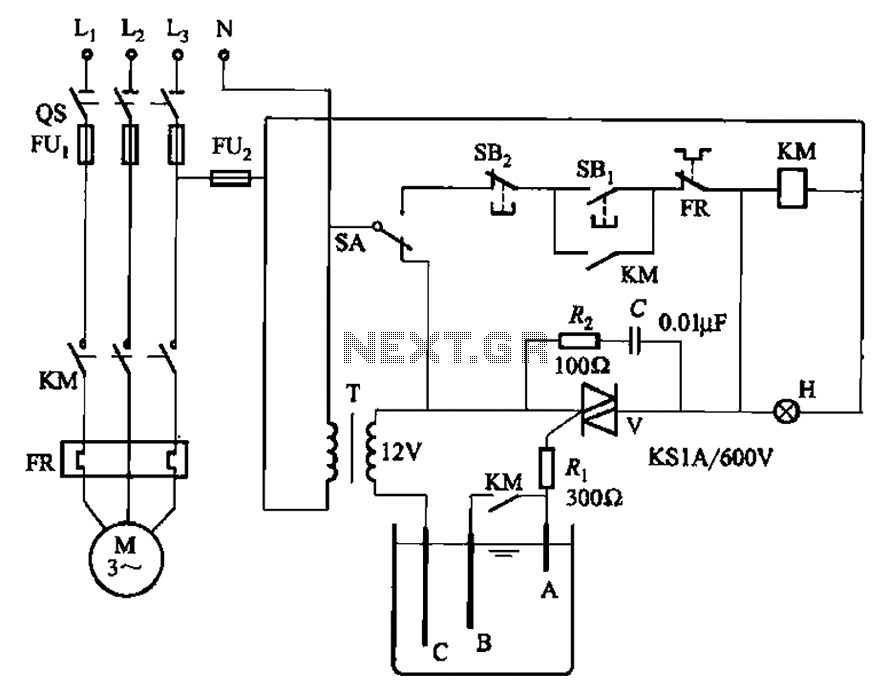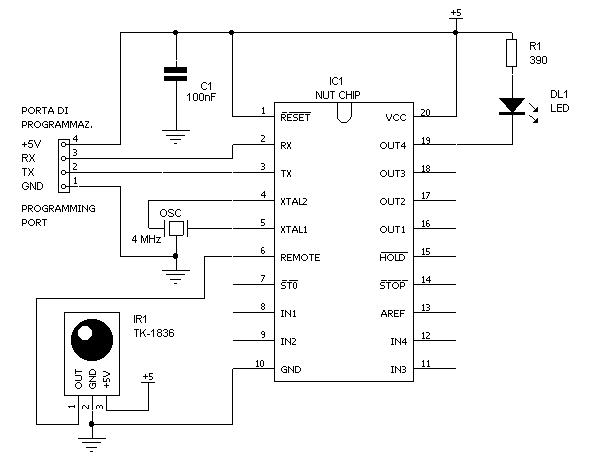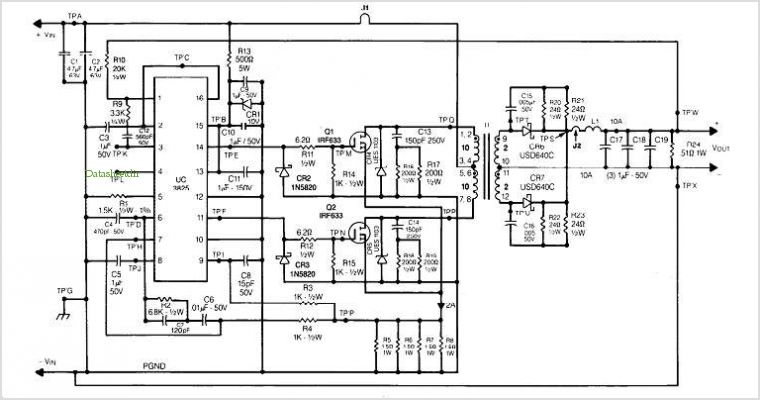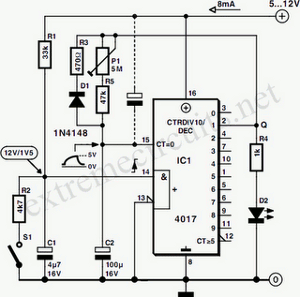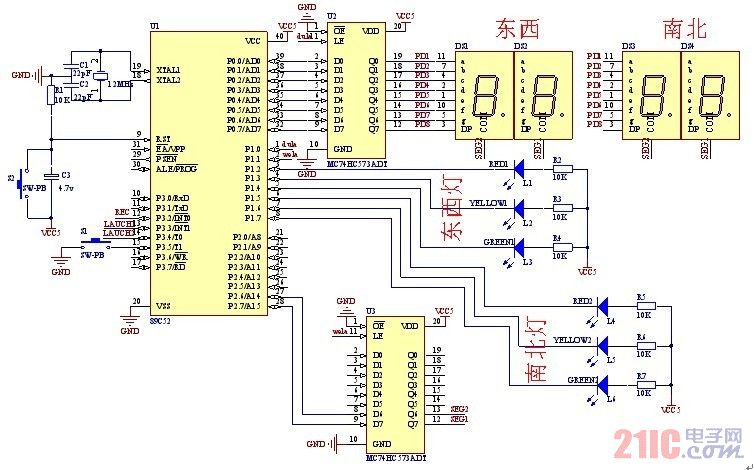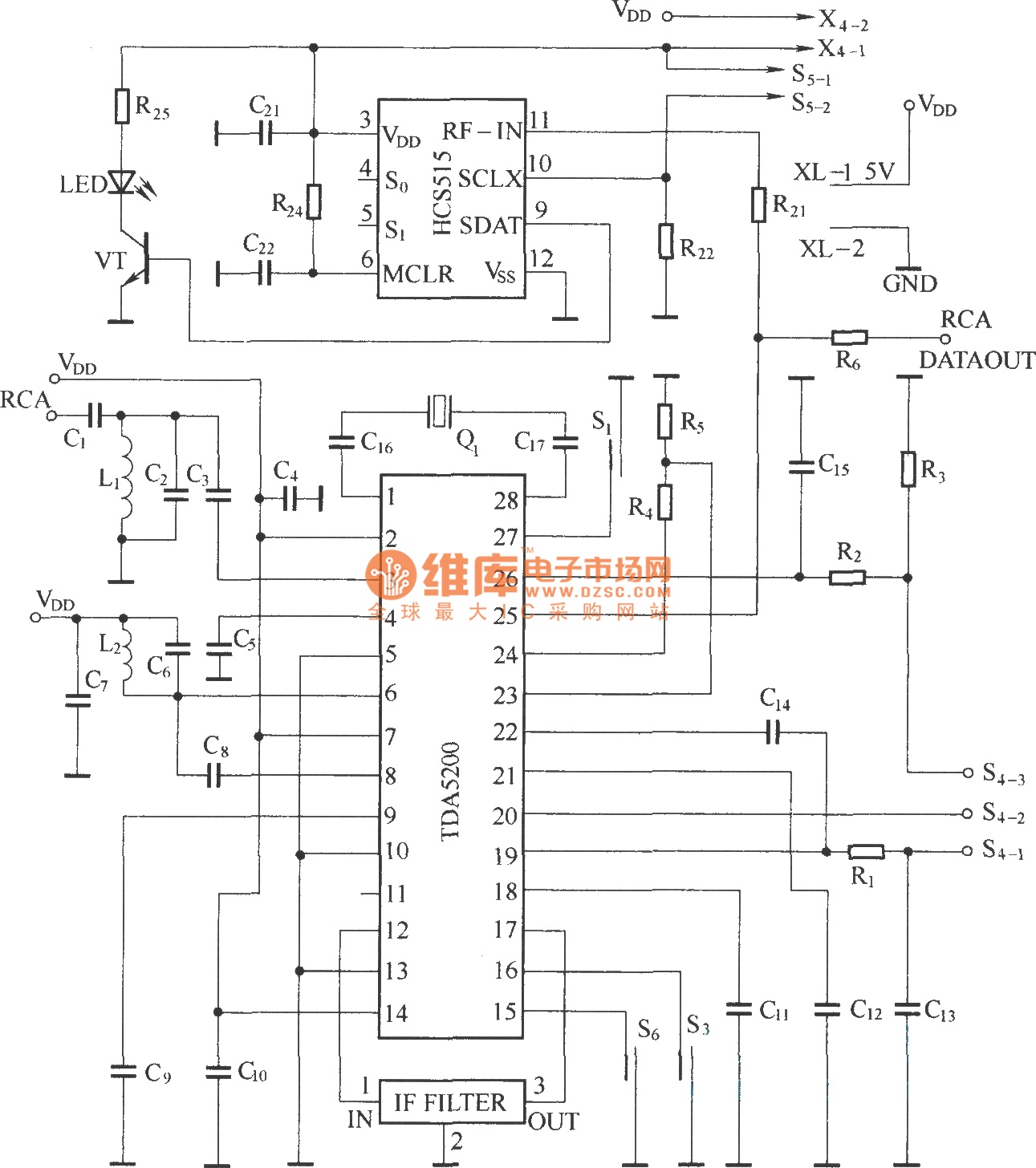
555 Timer TV Remote Controlled Home Appliance
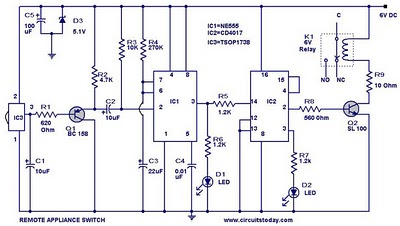
555 Timer TV Remote Controlled Home Appliance Circuit Diagram. Features: 555 timer IC to avoid fast switching. You can only switch the circuit.
The 555 timer integrated circuit (IC) is a versatile component widely used in various electronic applications, including remote control systems for home appliances. In the context of a TV remote-controlled home appliance circuit, the 555 timer is employed to manage the switching operation, ensuring stable and controlled activation of the connected device.
The circuit typically consists of a 555 timer configured in either monostable or astable mode, depending on the desired functionality. In monostable mode, the 555 timer generates a single output pulse when triggered by a signal from the remote control. This output pulse can be utilized to activate a relay or a transistor, which in turn controls the power to the appliance. The duration of the pulse is determined by external resistors and capacitors connected to the timer, allowing for customization based on the specific requirements of the application.
To avoid fast switching, which can lead to erratic behavior or damage to the appliance, the circuit may incorporate additional components such as Schmitt triggers or debounce circuits. These components help to filter out noise and ensure that the activation signal is clean and stable.
The circuit design may also include an infrared (IR) receiver module, which captures signals from the TV remote control. The output from the IR receiver is fed into the trigger input of the 555 timer, enabling the appliance to respond to commands from the remote. The overall circuit can be powered by a standard DC power supply, ensuring compatibility with most home appliances.
In summary, the 555 timer-based remote-controlled appliance circuit is an effective solution for automating home devices, providing a reliable and user-friendly interface for operation through a TV remote control.555 Timer TV Remote Controlled Home Appliance Circuit Diagram. Features: 555 timer IC to avoid fast switching. you can only switch the circuit .. 🔗 External reference
The 555 timer integrated circuit (IC) is a versatile component widely used in various electronic applications, including remote control systems for home appliances. In the context of a TV remote-controlled home appliance circuit, the 555 timer is employed to manage the switching operation, ensuring stable and controlled activation of the connected device.
The circuit typically consists of a 555 timer configured in either monostable or astable mode, depending on the desired functionality. In monostable mode, the 555 timer generates a single output pulse when triggered by a signal from the remote control. This output pulse can be utilized to activate a relay or a transistor, which in turn controls the power to the appliance. The duration of the pulse is determined by external resistors and capacitors connected to the timer, allowing for customization based on the specific requirements of the application.
To avoid fast switching, which can lead to erratic behavior or damage to the appliance, the circuit may incorporate additional components such as Schmitt triggers or debounce circuits. These components help to filter out noise and ensure that the activation signal is clean and stable.
The circuit design may also include an infrared (IR) receiver module, which captures signals from the TV remote control. The output from the IR receiver is fed into the trigger input of the 555 timer, enabling the appliance to respond to commands from the remote. The overall circuit can be powered by a standard DC power supply, ensuring compatibility with most home appliances.
In summary, the 555 timer-based remote-controlled appliance circuit is an effective solution for automating home devices, providing a reliable and user-friendly interface for operation through a TV remote control.555 Timer TV Remote Controlled Home Appliance Circuit Diagram. Features: 555 timer IC to avoid fast switching. you can only switch the circuit .. 🔗 External reference
